Autism-Open Access
Open Access
ISSN: 2165-7890
ISSN: 2165-7890
Research Article - (2019)Volume 9, Issue 2
Social communication deficits are becoming more evident and better understood as our awareness, diagnosis, and treatment advance. Additionally, social language difficulties related to Autism Spectrum Disorder are becoming more distinguished and better understood. The current study aims to evaluate six key pragmatic language constructs introduced by The Clinical Assessment of Pragmatics and comparatively analyse these six constructs in three groups - adolescents who present as: typically developing, present with pragmatic language impairment, and present with high functioning autism. The six constructs analysed include: instrumental performance, social context appraisal, paralinguistic decoding, instrumental performance, affective expression, and paralinguistic signals. Results of the current study revealed significant differences across groups of students on receptive and expressive pragmatic language tasks. Students with HFA and PLI demonstrated adequate performance on instrumental in nature tasks such as, demonstrating politeness and requesting for help. As expected, students with HFA and PLI exhibited significant difficulties on higher order pragmatics tasks, such as the use of affective language, perception of irony, expression of sorrow, and demonstration of support. The key findings of the current study revealed that there are three constructs that could differentiate the understanding, assessment, and treatment of social language in students with PLI vs. HFA. Students with PLI and HFA may differ in their understanding and use of the skills in the following constructs: Social Context Appraisal, Paralinguistic Decoding, and Paralinguistic Cues.
Pragmatic language; Pragmatic language impairment; Assessment; High-functioning autism; Social language
It is well known among researchers and clinicians that social communication difficulties are a distinctive feature of Autism Spectrum Disorder (ASD). Rao, Beidel and Murray argue that children who present with social skills deficits do not possess the “behavioural repertoire” to appropriately socially interact with others, which impacts both academic and social development [1]. Skills essential for a social interaction may include microfacial expressions, eye contact, body language, genuine smiles, conversation initiation, reciprocal conversation (eg: add-on comments, questions, etc.), expressing empathy, and understanding someone else’s perspective (theory of mind) [1,2]. Despite clinicians’ awareness of such difficulties, little research has focused on the different manifestations of social communication deficits across disorders, specifically in high-functioning autism (HFA) and pragmatic language impairment (PLI). Norbury and Bishop claim that PLI is characterized by verbosity, tangentiality, and a rising intonation pattern [3]. However, an abundance of research studies stress that these deficits are present in HFA as well [4]. While these two disorders are classified differently in the Diagnostics Statistical Manual–Fifth Edition (DSM-V), teasing apart their idiosyncrasies to construct clear profiles for aiding us in differential diagnosis and treatment has proven to be challenging. While there are plenty of assessments that thoroughly assess language fundamentals there are not as many formal assessments that assess pragmatics [5]. In addition, previous pragmatic language assessments have not been sensitive enough to identify the subtle, yet critical, differences between disorders (PLI and HFA). To support clinicians working with these populations, this study emphasizes the importance of pragmatic language, provides novel methods for assessing and treating pragmatics objectively, and brings to light the differences in pragmatic language deficits that exist between HFA and PLI.
In order to be successful communicators, not only must individuals understand and use words correctly, but they must also utilize linguistic context (i.e., infer meaning based off of prior knowledge and experiences) and social context. Previous research has suggested that in order for children to fully understand and interpret structural aspects of language (eg: vocabulary, syntax, phonology) and to be successful communicators, children must also be able to interpret verbal and non-verbal signals that provide valuable information regarding the speaker’s intentions [6]. For example, children need to understand the context in which a conversation was taking place, non-verbal cues such as facial expressions and gestures, and changes in intonation. Pragmatic language essentially binds together all aspects of expressive and receptive language (i.e., phonology, morphology, syntax, and semantics) and is considered to be the final piece of the puzzle that enables clear, effective communication. While a clear definition of pragmatics is well established, assessing and treating pragmatics objectively has proven to be challenging due to its flexible nature. The current study aims to further investigate surface level pragmatic language deficits as well as deeper level pragmatic deficits present in three adolescent groups: typically developing, pragmatic language impairment (PLI), and high-functioning autism (HFA).
The present study was influenced by linguistic studies, specifically, studies that assessed how individuals extract meaning from what they hear and read, as well as how they produce and convey meaning in speech and writing. As described by Peccei, such a linguistic consideration is informed by the distinction between semantics and pragmatics [7]. When considering semantics from a purely linguistic view, semantics reflects and involves the consideration of meaning, which is produced by language [7]. In contrast, pragmatics concentrates on aspects of meaning, which are not predicated by linguistic information alone but also involves knowledge and application of cues and information derived from our physical environment and socialization [8]. This definition of pragmatics is reinforced in the work of Andersen, who argues that variation in speech and use of language is social in nature when considered from a semantic perspective, but there is also strong basis for culture, age, and gender-specific variations [9]. Linguistic features of spoken interaction tend to be context-dependent, meaning that a spoken utterance’s meaning may change depending on the setting, situation, and interpretation of an utterance [9]. This is a process far more subtle and complex than the rote process of “linguistic encoding” upon which the majority of language and communication appears to be based [9]. While Andersen considers the variation in pragmatic methods of decoding speech in the context of cross-generational communication (particularly between adolescents and adults), a similar variation in encoding and decoding mechanisms is also seen among students with different learning abilities [9]. Encoding and decoding mechanisms are also considered by Li, who argues that while these concepts are based in speech, they are also expressed by various forms of body language such as hand gestures or head movements, as well as prosodic structure and the frequency and prominence of given utterances [10].
Research conducted by Bishop and Adams explored the previously mentioned social language skills [11]. Bishop and Adams suggest that children may be able to use language correctly, however, their impaired social language may create communication difficulties [11]. For instance, a student who has difficulty with their pragmatic language may use phrases or sentences that are syntactically correct, however, are inappropriate to the given context or situation [11]. When assessing speech and language, difficulties may arise due to this distinction between expressive and receptive language abilities and appropriate use of social language [12,13]. Due to past difficulty in distinguishing between appropriate pragmatic language use, it is necessary to assess and treat pragmatic language in the context of learning disorders and childhood development.
Speech-language impairment (SLI) can appear early on in childhood but is often disregarded and believed to be due to a difficulty in learning the subtle differences of language. Bishop and Leonard suggest this may be due to the child’s difficulty understanding of the structure of language [14]. This difficulty, which is also explored in more detail in Leonard’s text, indicates that some structural damage or developmental problem is at fault [15]. However, these problems are often more difficult to diagnose and treat than they seem at first. Rather than a structural understanding of language being at fault for students’ communication impairment, they may instead present with “pragmatic difficulties,” or problems in appropriate language use in a specific context [14]. A major difficulty with undiagnosed pragmatic communication disorders is that because of communication difficulties, students may be reluctant to communicate at all. This reluctance to communicate may lead the student down a “negative spiral” as further attempts at communication may come to a halt. This occurs because these students find a lack of positive feedback in any communication, meaning that this problem is likely to continue [15].
Pragmatic language difficulties are problematic in the context of education, and pose a strong barrier to effective learning. It is crucial that pragmatic language deficiencies are identified immediately and students are provided with the necessary tools to assist in their education. Additionally, current literature reports that students diagnosed with SLI frequently present with pragmatic language disorders as well [16]. Moreover, there is research to support that pragmatic communication difficulties are consistently present in students with autism spectrum disorders [14,17].
As described by Bartak there are many similarities between those with SLI and those with HFA, but there are also several marked differences between the two groups [18]. First, none of the participants in Bartak study used gestures in communication, and half of the language-impaired subjects failed to perform this common communication activity [18]. Secondly, among participants presenting with language difficulties, such difficulties could be explained in terms of lack of communication skills, whereas participants with autism showed “qualitative oddities” in their use of language, which could not be contextualized as a deficiency in necessary skills [18]. For instance, language-impaired children with autism were observed using indecipherable words and phrases, which held private meaning. Children with HFA are found to be deficient in effective communication skills and also lack the contextual and pragmatic understanding of when to use the ineffective and personalized skills they acquire over their lives [19,20-21].
Overall, children with language impairments have substantial difficulty in mastering syntax and overall semantic language use. They also exhibit limitations in their capacity for vocabulary and the use and decoding of complex sentence structures. Those with HFA show greater difficulty in context-specific cues and pragmatic language use. Yet, despite the findings of Bartak and Bishop and Leonard, caution should be taken against labelling all children who present with “autistic-like pragmatic difficulties” as “children with autism,” because many of Bartak’s cases were difficult to concretely categorize, and a small subset of identified cases with pragmatic difficulties showed “significant autistic features” in domains beyond linguistics, semantics, and wider communication [18,22]. It is recommended that pragmatic disorders be clearly delineated from autism by other authors who caution against misdiagnosis [23].
There is a clear difference between language impairment and autism, and thus, there needs to be a clear way to identify students who have difficulty understanding or using verbal and nonverbal social language. As previous research has demonstrated, deficiencies in pragmatic language will adversely affect a child’s social and emotional growth, as well as academic performance. When identifying students with pragmatic language difficulties, it is important to recognize the difference between language impairment and autism in order to appropriately develop goals, accommodations, and/or modifications, and provide services necessary to meet their educational needs. Thus, this distinction is important in the educational setting when working with students who present with HFA and PLI.
Past research has investigated treatments for pragmatic language disorders; however, there has been an absence of research that focuses on the assessment of pragmatic language [15,16]. This may be due to the selection and number of assessment tools that measure pragmatic language. Currently, there is a limited selection of formal assessment tools specified for pragmatic language. Some assessment tools have pragmatic language subtests; however, there is a need for additional full-scale social-pragmatic assessments. Due to the nature of pragmatic language, clinicians have been sceptical and doubtful as to whether a pragmatic language assessment could ever be developed [17]. In the past, assessments designed to evaluate social communicative functions have, instead, evaluated underlying cognitive and/or linguistic skills instead of pragmatics [22]. The pessimism for the development of standardized pragmatic language assessments may occur for several reasons. First, pragmatic language, by its nature, is a subjective and is a highly complex part of communication. There are numerous variables that would need to be considered to capture an accurate picture of an individual’s pragmatic language ability. For example, students with pragmatic language deficits may miss subtle, yet critical, non-verbal cues provided by conversational partners such as body language, gestures, eye contact, and/or facial expressions that may provide information that indicates disinterest, confusion, and boredom [24]. Additionally, any pragmatics testing methodology must address a wide spectrum of context-driven pragmatic conversational elements such as: greetings, assertions, questions; social behaviour, including facial expressions, posture, turn taking and eye contact. More specifically, conversational behaviour must be addressed which includes greetings, introduction of topics, topic maintenance, and repairing conversational breakdowns. Rules and conventions of conversation must also be addressed - conversational remarks must be clear, concise, and informative [19].
Pragmatic language - Judgment and performance
The definition of pragmatic language incorporates both the perception and use of social language. Generally, the perception and use of social language skills are paired together under one construct. The current study aims to redefine how we assess and treat pragmatic language by breaking pragmatic language into two constructs: Pragmatic Judgment (PJ) and Pragmatic Performance (PP). The construct of pragmatic judgment has both receptive and expressive components and requires individuals to appropriately interpret and use language [25]. PJ requires an individual to understand what someone is saying based off of verbal and nonverbal cues, and in-turn, provide an appropriate response given the situation [26]. In the current study, PJ will refer strictly to receptive pragmatic language skills (i.e., understanding of verbal and non-verbal language). The purpose of this is to allow for a more detailed understanding of an individual’s ability to comprehend contextual cues within a given social situation. On the other hand, expressive pragmatic language skills (i.e., use of verbal and nonverbal language) will be labelled as Pragmatic Performance (PP). Currently, formal standardized assessments that can distinguish between PJ and PP skills are limited. Assessments that do exist that contain a “pragmatic language” component such as, the Comprehensive Assessment of Spoken Language (CASL), Test of Pragmatic Language – Second Edition (TOPL-2), and the Social Language Development Test: Adolescents, tend to be vague and do not differentiate between the receptive and expressive use of pragmatic language [27-29]. The Clinical Assessment of Pragmatics (CAPs) is a new video-based assessment that delves into pragmatic language consisting of the previously mentioned constructs. The CAPs will be used in the current study, see below.
Instrumental versus Non-instrumental communicative intent
For the purpose of this study, pragmatic language skills will also be defined as instrumental or affective. When the primary purpose of communication is to effectively pass on a message, it is described as instrumental communication (IC). The importance of the message lies in what is actually being said and does not take into account emotional aspects [30]. Instrumental communication is considered to be a means to an end.
Non-Instrumental Communication (NIC) on the other hand requires higher-level skills and is all about affective communication and how an individual uses emotion to express a given message. For example, when an individual uses verbal and non-verbal language (e.g., facial expressions, gestures) to indicate joy or sorrow, this is considered to be non-instrumental communication. Whereas IC is considered to be a means to an end, NIC is considered to be more than that [30]. When assessing pragmatic language abilities, NIC is seen as an important factor because it is demonstrated both receptively and expressively in pragmatic judgment and pragmatic performance respectively. Students with HFA and PLI often demonstrate difficulty with interpreting other people’s emotions and/or taking someone else’s perspective. Thus, instrumental and non-instrumental intent is a large piece to assessing and treating pragmatic language.
Pragmatic judgment: Pragmatic Judgment is evaluated by exploring the following three areas: Instrumental Performance Appraisal, Social Context Appraisal, and Paralinguistic Decoding.
Instrumental Performance Appraisal refers to an individual’s ability to judge the appropriateness of others social language skills. Skills observed and judged may include: greetings (e.g., introductions, farewells), requests (eg: asking for help), expression of gratitude (eg: thank you), asking for permission, in varying scenarios. Instrumental performance appraisal evaluates an individual’s perception of social language skills, and ability to perceive appropriate and inappropriate social language.
Social Context Appraisal (SCA) refers to an individual’s ability to understand someone else’s perspective or point of view, and also to understand that social contexts and situations are always changing. In order to understand someone else’s perspective, an individual must be able to process all contextual variables as well as interpret social settings, routines, and disruptions and flexibility in routines. Gutstein and Whitney discuss how children with HFA exhibit difficulty with such appraisal, as it is difficult for children with HFA to engage in perspective taking [31]. Perspective taking refers to when an individual is able to recognize that the emotional state of another individual differs from his/her own emotion state, and infer that person’s own thoughts, beliefs, feelings, and/or emotions [32]. The ability to reflect on the emotional states of other people is crucial to social interactions across the lifespan [33]. The DSM-V does not consider this judgement in diagnosing autism; however, Happé found severe impairments in students with HFA and their theory of mind [34].
Paralinguistic Decoding refers to an individual’s ability to interpret or read non-verbal language such as facial expressions. Social interactions rely heavily on the understanding and use of verbal language as well as the understanding and use of nonverbal language. Often times, we can understand exactly what a person is thinking or feeling based simply off of their reaction and/or facial expressions. Words may not be needed to express a feeling or thought. Additionally, sometimes non-verbal language may contradict verbal language (e.g., what a person is verbally expressing may differ from what they’re visual expressing). The ability to understand nonverbal language is vital when building relationships with others. Children with autism have difficulty with social communication, specifically in the areas of facial expression [35-37]. Furthermore, students with PLI have been observed to miss/disregard non-verbal social cues that are used by their conversational partners during a communicative situation [38,39].
Pragmatic performance: Pragmatic Performance is evaluated by exploring the following three areas: Instrumental Performance, Affective Expression, and Paralinguistic Signals.
Instrumental Performance refers to an individual’s use of social language. Skills include the appropriate use of greetings (eg: introductions, farewells), requests (eg: asking for help), expressions of gratitude (eg: thank you), asking for permission, and phone calls in varying scenarios. Whereas instrumental performance appraisal evaluates an individual’s perception of appropriate social language skills, instrumental performance evaluates an individual’s use of social language. Under the diagnostic criteria in the DSM-V, this skill is considered impaired in both HFA and PLI.
Affective Expression refers to an individual’s ability to use higher order language when communicating. Affective expression involves emotion, such as the use of compliments, humor, sorrow, empathy, gratitude, and/or regret. Affective expression involves higher order language because its purpose is more than just expressing basic wants and needs. When we use emotion when we speak, we’re providing additional information for our conversational partner so that they can better understand our perspective or point of view. Students with HFA and PLI may struggle with the use of affective expression, which in turn will impact conversations with peers, family, and friends. For example, students who have difficulties with affective expression may not be able to appropriately maintain a topic, change the topic, transition, or close a conversation. A study conducted by Beukeboom explored affective expression in conversation and found that the perception and use of expressions may change the course of a conversation [40]. For example, if the speaker is not receiving the affective expressions they are looking for from the listener, the speaker may change their use of language and in-turn, what they were originally trying to convey [40]. The correct use of affective expression allows for both conversational partners to be flexible during conversation and appropriately adapt to their partners’ comments [40]. Research conducted by Bishop and Leonard found that children at times used inappropriate prosody [14]. Additionally, children with PLI have been found to exhibit less use of non-verbal responses (i.e., Head nodding) than normally developing children [14]. Furthermore, Bishop and Norbury found that children with PLI produced stereotyped language with abnormal (over-exaggerated) intonation and prosody [41].
Paralinguistic Signals refers to an individual’s ability to appropriately use non-verbal language (eg: Micro-expressions, Gestures) and prosody. Whereas paralinguistic decoding evaluates an individual’s perception of non-verbal language, paralinguistic signals evaluates an individual’s use of non-verbal language, gestures, and prosody. Similar to affective expressions, paralinguistic signals provide important details to a conversation and may impact the direction and course of a conversation. Signals may include facial expressions, body language (i.e., posture, movements), eye contact, and intonation in voice. Students with PLI often demonstrate inappropriate, exaggerated intonation and prosody [3]. A diagnostic criteria of Autism in the DSM-V, is “abnormalities in eye contact, body language, and use of gestures to a total lack of facial expressions and non-verbal communication.”
Students who present as typically developing, present with HFA, and present with PLI were comparatively analysed using the Clinical Assessment of Pragmatics (CAPs) tool. The CAPs is a pragmatic video-based language assessment that is made up of six subtests. The six subtests reflect the pragmatic language constructs discussed above. Figure 1 contains a more detailed description of each subtest. The CAPs uses sixty short videos, ten per construct. A sample of a video based scenario can be found in Figures 2-7. The current study aimed to evaluate the six key pragmatic language constructs and answer the following questions: What similarities and differences can be found in the area of pragmatic judgment and pragmatic performance in students who present as: Typically developing, present with pragmatic language impairment, and present with high functioning autism?
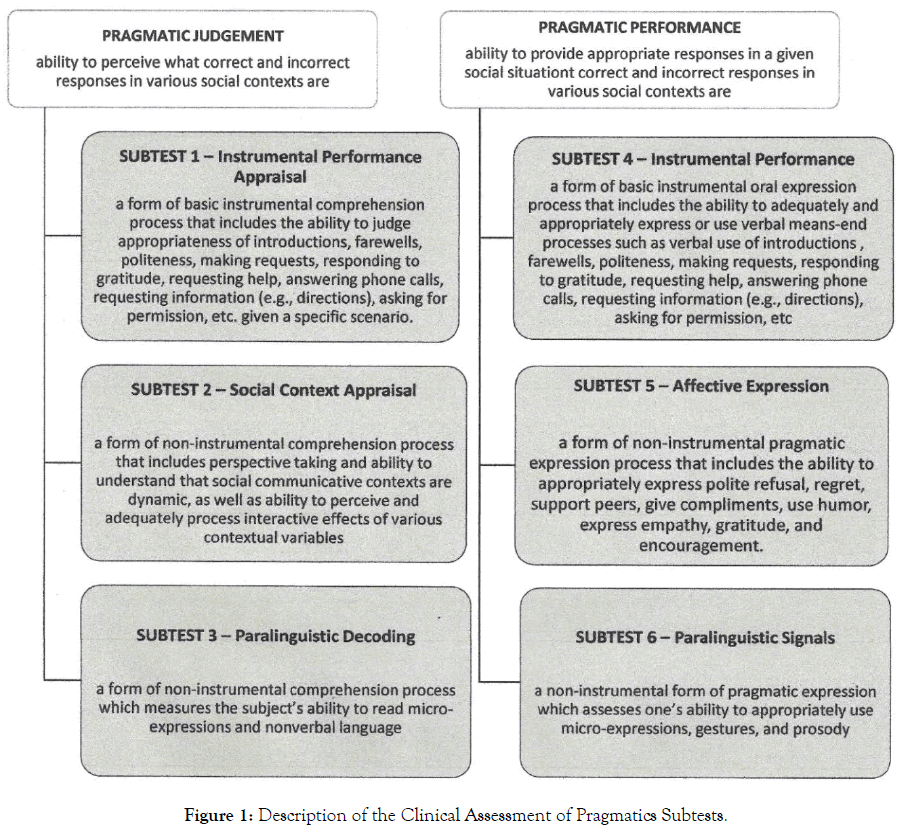
Figure 1. Surgical training questionnaire
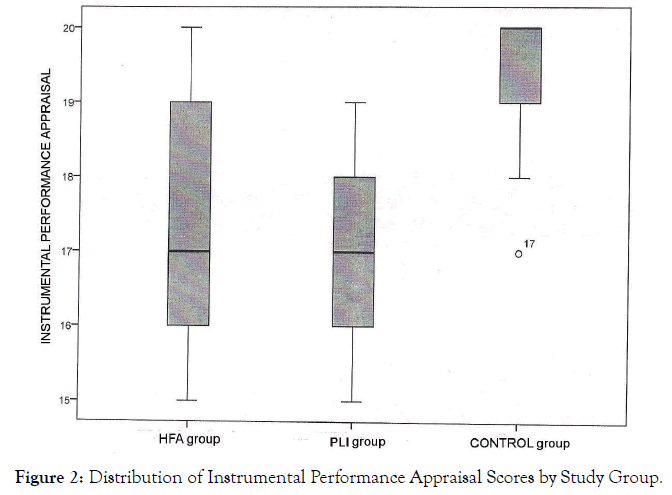
Figure 2. Surgical training questionnaire
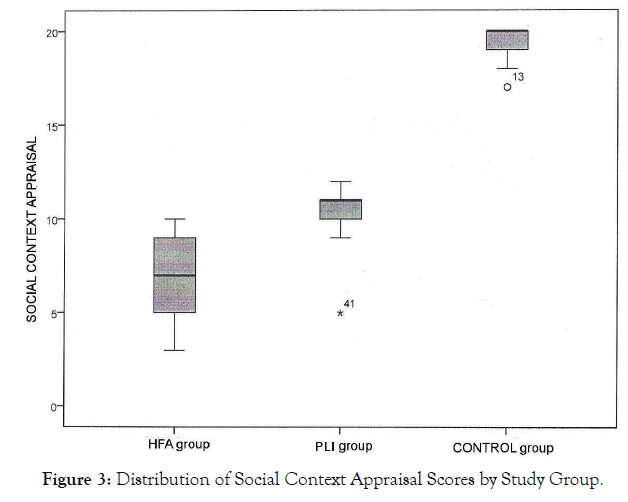
Figure 3. Surgical training questionnaire
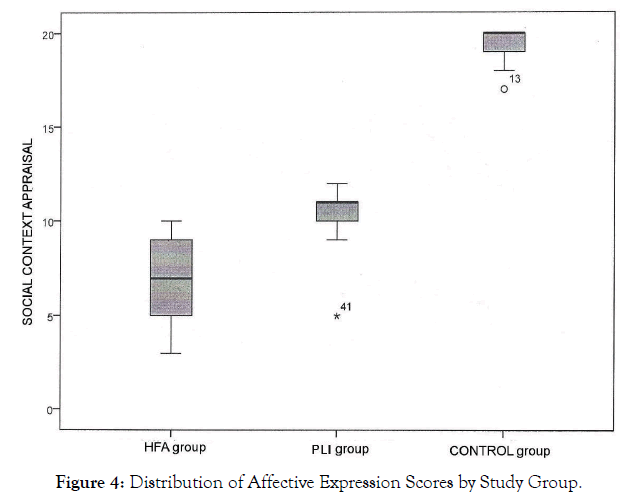
Figure 4. Surgical training questionnaire
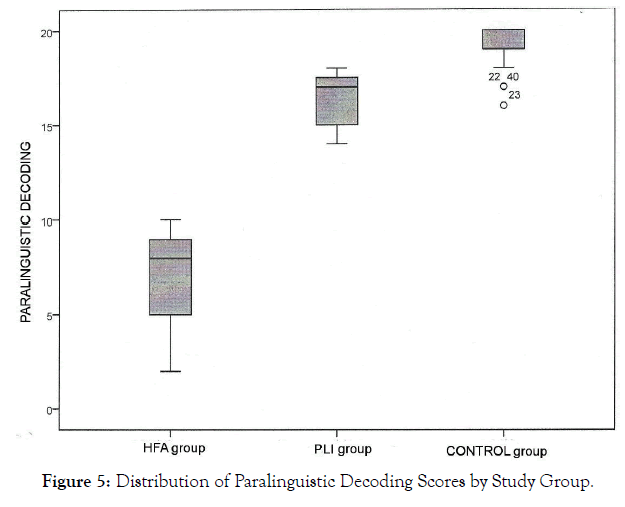
Figure 5. Surgical training questionnaire
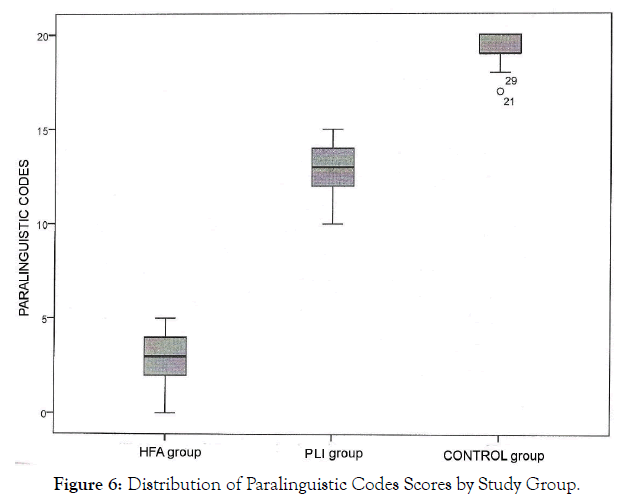
Figure 6. Surgical training questionnaire
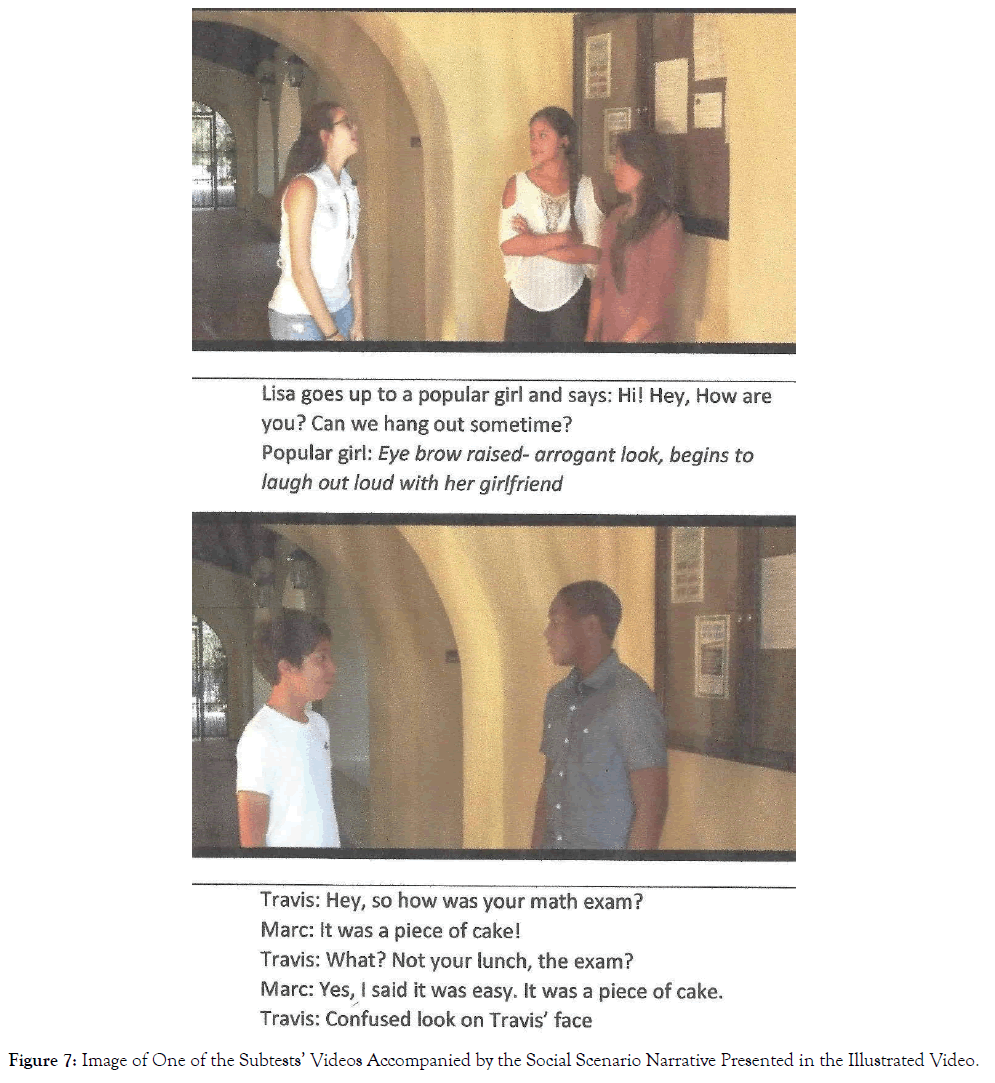
Figure 7. Surgical training questionnaire
Participants
A total of one-hundred-and-twenty participants were recruited for the present study. Participants were between the ages of 14 and 16. Three groups were established: “typically developing students,” “students who present with high functioning autism (HFA) and students who present with pragmatic language impairment (PLI).” Each group consisted of forty students. In order to meet criteria to be classified as a typically developing student, participants were required to exhibit hearing sensitivity that was within normal limits, have age appropriate language skills, attend general education classrooms, and demonstrate academic success (no failures). Additionally, students who presented with co-morbid disorders as defined by the DSM-V such as personality disorders, mental health disorders, or general medical conditions were excluded from the typically developing group. In order to meet criteria to be classified as a student presenting with HFA, participants were required to have a current diagnosis of HFA or Asperger’s Syndrome (based on medical records and California department of education, special education eligibility criteria) and attend general education classrooms for at least 4 hours per day. Lastly, in order to meet criteria to be classified as a student presenting with PLI, participants were required to have a current diagnosis of PLI (scoring below the 7th percentile on two standardized pragmatic language tests) based on the California Department of Education eligibility code and also attend general education classrooms. Participants were excluded from the PLI group if they presented with intellectual disability, learning disability, and/or emotional disturbance.
Additionally, students who presented with co-morbid disorders as defined by the DSM-V such as personality disorders, mental health disorders, or general medical conditions were excluded from the PLI group.
Students in all three groups were administered the CAPs to evaluate pragmatic language constructs. California state licensed speech-language pathologists, who were previously trained in the CAPs protocol, administered the assessment in quiet rooms, free of distractions, in the participants’ homes. Prior to test administration, all participants were presented with two practice videos. Administration of the CAPs took approximately 45 to 55 minutes. Testing followed the standardized administration format. Specifically, a visual-auditory presentation of each of the video role-plays was used, with normal rate of speech and normal intonation. Additionally, vocabulary used in the assessment was age appropriate. Furthermore, prior to watching individual video role-plays, the participants were given specific instructions for both pragmatic judgment subtests and pragmatic performance subtests.
The participants were required to watch individual video roleplays. Prior to viewing the videos, the clinician read the following instructions: “We’re going to look at some short videos of social situations. You’ll have to listen carefully because you can only see the videos once. After watching each video, you will be asked if anything went wrong in the video.” The participants would then describe what went wrong (if anything) after viewing each video.
Pragmatic performance subtests: The participants were required to watch individual video role-plays. Prior to viewing the videos, the clinician would read the following instructions: “We’re going to look at some short videos of social situations. You’ll have to listen carefully because you can only see them once. After watching the video, you will be asked what you would do in this situation.” After viewing each video, the participants were required to answer one of the following questions: “Did anything go wrong in this situation?” or “What would you say or do in this situation?”
A pilot study was initially conducted to evaluate the validity and reliability of the CAPs as an assessment for pragmatic language skills. The pilot study had thirty participants. Participants were placed in one of three groups: 10 participants who presented as typically developing, 10 participants who presented with HFA, and 10 participants who present with PLI. The pilot study revealed that the CAPs provides valid and reliable information and is a strong measure of pragmatic language skills. Additionally, test-retest and inter-rater reliability were found to be strong. Further, concurrent validity was obtained on three of the CAPs subtests and correlated with results from other pragmatic language assessment tools such as the Clinical Assessment of Spoken Language (CASL)–Pragmatic Judgement subtest, the Test of Pragmatic Language (TOPL) and the Social Language Development Test (SLD) [27-29].
The Statistical Package for the Social Sciences (SPSS) version 23.0 was used to analyse data. Frequencies and relative frequencies (%) were outlined to describe general characteristics of each participant. Kolmogorov-Smirnov and the Shapiro-Wilk test were used to examine the normality of the quantitative variables. The distribution of the scores by study group was explored using Box and Whisker plots. The mean for the outcome variables (Instrumental Performance Appraisal, Social Context Appraisal, Paralinguistic Decoding, Instrumental Performance, Affective Expression, Paralinguistic Codes subtests) were compared among the three study groups using Kruskal Wallis analysis of variance (ANOVA). Further comparisons in mean scores between the groups were examined using Mann-Whitney U test. The level of significance was set at p ≤ 0.05.
One hundred and twenty participants were recruited for this study. The characteristics of the participants by group are displayed in Table 1. Languages spoken at home were English, Spanish, Cantonese, Tagalog, and Russian. The language spoken mainly at home was English (50-60%). There was a significant difference in mean Instrumental Performance Appraisal score among the three study groups (17.4 ± 1.6 vs. 17.7 ± 1.2 vs. 19.7 ± 0.7; p<0.001). Further comparisons using Mann- Whitney U test showed that there was a significant difference in mean Instrumental Performance Appraisal score between the HFA and control groups, and between the PLI and control group (p<0.001), but not between the HFA and the PLI groups (p=0.07). For the other tests, there was a significant difference among all the study groups (p<0.001) (Table 2). The distribution of the scores by study group is displayed in Figures 2-6.
| Control (n=30) | PLI (n=30) | HFA (n=30) | ||||
|---|---|---|---|---|---|---|
| Frequency | % | Frequency | % | Frequency | % | |
| Gender | ||||||
| Male | 13 | 43.33 | 18 | 60 | 21 | 70 |
| Female | 17 | 56.66 | 12 | 40 | 9 | 30 |
| Ethnicity | ||||||
| White | 11 | 36.66 | 10 | 33.33 | 12 | 40 |
| African American | 5 | 16.66 | 6 | 20 | 4 | 13.33 |
| Hispanic | 10 | 33.33 | 12 | 40 | 11 | 36.66 |
| Asian | 4 | 13.33 | 2 | 6.66 | 3 | 10 |
| Languages other than English spoken at home | ||||||
| Spanish | 9 | 30 | 12 | 40 | 11 | 36.66 |
| Cantonese | 2 | 6.66 | 1 | 3.33 | 2 | 6.66 |
| Russian | 1 | 3.33 | 1 | 3.33 | ||
| Tagalog | 2 | 6.66 | 1 | 3.33 | 1 | 3.33 |
| Abbreviations:PLI: Pragmatic Language Impairment; HFA: High Functioning Autism | ||||||
Table 1: Characteristics of participants by group (N=120).
| HFA group (n=40) | PLI group (n=40) | Control group (n=40) | p –value* | |
|---|---|---|---|---|
| IPAa,b | 17.4 ± 1.6 | 17.7 ± 1.2 | 19.7 ± 0.7 | <.001 |
| SCAa,b,c | 6.8 ± 2.2 | 10.6 ± 1.3 | 19.5 ± 0.7 | <.001 |
| PDa,b,c | 7.0 ± 2.4 | 16.5 ± 1.2 | 19.2 ± 1.0 | <.001 |
| IPa,b,c | 15.7 ± 2.1 | 17.0 ± 1.3 | 19.9 ± 0.3 | <.001 |
| AEa,b,c | 6.3 ± 2.8 | 9.9 ± 1.5 | 19.4 ± 0.7 | <.001 |
| PCa,b,c | 3.2 ± 1.5 | 13.2 ± 1.3 | 19.2 ± 0.8 | <.001 |
| Abbreviation: SD: Standard Deviation; PLI: Pragmatic Language Impairment; HFA: High Functioning Autism; IPA: Instrumental Performance Appraisal; SCA: Social Context Appraisal; PD: Paralinguistic Decoding; IP: Instrumental Performance; AE: Affective Expression; PC: Paralinguistic Codes. |
||||
| *Kruskal-Wallis Analysis of Variance test | ||||
| aSignificant difference between HFA group and control | ||||
| bSignificant difference between PLI group and control | ||||
| cSignificant difference between PLI group and HFA groups | ||||
Table 2: Mean (SD) of Instrumental Performance Appraisal, Social Context Appraisal, Paralinguistic Decoding, Instrumental Performance, Affective Expression, Paralinguistic Codes subtests (N=120).
The purpose of the current study was to evaluate six key pragmatic language constructs introduced by The Clinical Assessment of Pragmatics (CAPs) and comparatively analyse these six constructs in three groups - adolescents who present as: typically developing, present with pragmatic language impairment, and present with high functioning autism. The six constructs analysed include: Instrumental performance, Social context appraisal, Paralinguistic decoding, Instrumental performance, Affective expression, and Paralinguistic signals. Previous research has focused on pragmatic language skills and pragmatic language assessments that are instrumental in nature. Specifically, past literature has targeted greetings (i.e., introductions, farewells) responses to questions, and requests for clarifications. Additional skills that are explored in a cursory manner by these assessments include understanding inferences, and non-literal language. While each of these elements, when considered in tandem, can provide evidence of pragmatic language impairment, many key elements, such as paralinguistic decoding, understanding others’ perspective, or subtle social contextual cues, are not addressed in the standard assessment protocol. Thus, this study utilized an assessment that looks at noninstrumental, higher order social language skills. For example, students presenting with HFA have little difficulty performing adequately on instrumental in nature diagnostic skill sets, but present with significant difficulties decoding micro-expressions, subtle contextual cues, or using prosody - paralinguistic cues that are not typically found as part of a standard assessment protocol. For this reason, students may not appear as eligible when they are assessed and miss essential pragmatic language intervention. Using the CAPs as an assessment tool, this study was able to evaluate instrumental and affective in nature “higher order” skills that are both spoken and non-verbal via video prompts of real-life social scenarios. Additionally, students’ paralinguistic decoding and use of paralinguistic cues, such as facial expressions and body language were evaluated. Subsequently, new patterns in pragmatic language profiles of students with HFA and PLI were identified.
Students with HFA and with PLI demonstrated similar performances on instrumental subtests, when judging or using introductions, farewells, asking questions, and making requests.
Such results support the notion that both groups of students with social language deficits have the capacity to socially operate independently in society and satisfy their basic needs for instrumental socialization. However, when these two groups of students were administered the subtests that assessed their capacity for Social Context Appraisal and Affective Expression, differences were identified as compared to the typically functioning group regarding their ability to assess social situations and contextual cues, specifically the thoughts or intentions of others, interpretation of sarcasm, irony, and/or humor. Moreover, a significant difficulty in the use of affective language was observed in students with HFA and PLI. For example, students had difficulty expressing regret, support, empathy, gratitude, encouragement, and providing compliments. While both groups demonstrated profound difficulties on expressive non-instrumental pragmatic tasks, the PLI group exhibited better and significantly different performance on the Social Context Appraisal task indicating higher capabilities to process and understand social context and its dynamics as compared to students with HFA. Results indicate that students with PLI are more capable of making sense of social settings and situations than students with HFA. Further, the PLI group and typically developing group had few differences in regards to their abilities of paralinguistic decoding. The limited differences observed between the PLI and typically functioning group demonstrates that the PLI group is able to interpret nonverbal language such as facial expressions, indicating stronger receptive pragmatic language skills when compared to participants in the HFA group. When compared to students who present with PLI, those with HFA performed poorly on all paralinguistic subtests, which required reading or the identification of facial expressions suggesting profound deficiencies in their identification and use of non-verbal language, facial micro-expressions, gestures and prosody.
In a broader capacity, the study revealed that the HFA and the PLI groups of students performed well on both receptive and expressive facets of instrumental pragmatic language tasks, and were capable of demonstrating ‘basic’ conversational skills. Both groups of students showed significant difficulties regarding expressive pragmatic language, such as appropriate use of affective language. However, the PLI group distinguished itself from the HFA group by their higher receptive pragmatic language skills and abilities to process and use paralinguistic cues. The HFA group could be differentiated from the PLI group by their difficulty in understanding and using non-verbal language and non-verbal cues, as well as facial expressions. Further, this study could suggest that with the help of advanced video assessments, higher-level pragmatic language deficits can not only be identified but also differentiated between high-functioning autism versus pragmatic impairments related to specific language delays.
Strengths of the current study include the number of participants, as well as the use of a control group to compare participants with HFA and PLI against. Additionally, the participants in this study come from ethnically diverse and cultural backgrounds. Furthermore, this study explored the use of the CAPs assessment, which is relatively new to the field of speech-language pathology. The CAPs uses videos, which is different than other assessment tools. The use of videos provide participants with more relevant, “real life” interactions. Further, the actors in the videos come from a wide variety of ethnic and cultural backgrounds. Lastly, this study identifies and pinpoints specifics of a student’s pragmatic needs, which will help speech-language pathologists create appropriate goals and target the specific pragmatic constructs.
Limitations of this study include demographics. Specifically, there were more male participants in the HFA group. However, this may be reflective of the increased likelihood of males presenting with autism, which is concurrent with today’s autism incident rates. There were also a limited number of Asian students in both the HFA and PLI groups.
The clinical implications of this study hinge on its finding that both HFA students and those with PLI can comprehend and use instrumental pragmatic skills effectively. For this reason, current therapeutic intervention must move beyond traditional therapy that targets instrumental in nature tasks, and instead, focus on non-instrumental, higher-order pragmatic skills. For both groups, understanding of and use of subtle social cues (such as social context, higher order intent as negotiation, irony, sorrow, regret, etc.) will form an effective therapeutic ‘starting point’ rather than traditional methods of instrumental socialization. Moreover, this study has strong implications for the focus of pragmatic language therapy for students with HFA. Specifically, students should focus on facial expression recognition as well as appropriate use of paralinguistic cues.
The findings of the current study provide evidence for the importance of differentiating between pragmatic judgment and pragmatic performance, instrumental and non-instrumental communication, and the six constructs within these areas. When pragmatics is broken down into these constructs, clinicians are more equipped to decide on appropriate eligibility, services, and goals. Previously, pragmatics has been lumped to surface level social language skills, and students either do not qualify for services or are exited before addressing deeper, significant levels of pragmatic language. Future studies should continue to delve into the deeper areas of pragmatic language and explore how best to treat pragmatic language deficits within the context of varying disorders. Additionally, younger children (ages 7 to 12) and older children (ages 17 to 21) should also be evaluated to determine similarities and differences with pragmatic judgment and pragmatic performance in the six constructs proposed by the CAPs. Furthermore, the connection between academic performance and pragmatic language deficits should be explored. Lastly, research should explore the differences between a cultural distinction (language difference) and true language disorders.
Citation: Lavi A(2019) A Comparative Analysis of Social (Pragmatic) Communication Skills in Students with High-Functioning Autism and Pragmatic Language Impairment using Video-Based Assessments. Autism Open Access 9: 239. doi: 10.35248/2165-7890.19.9.239.
Received: 15-Jul-2019 Accepted: 23-Aug-2019 Published: 30-Aug-2019 , DOI: 10.35248/2165-7890.19.9.239
Copyright: © 2019 Lavi A. This is an open-access article distributed under the terms of the Creative Commons Attribution License, which permits unrestricted use, distribution, and reproduction in any medium, provided the original author and source are credited.